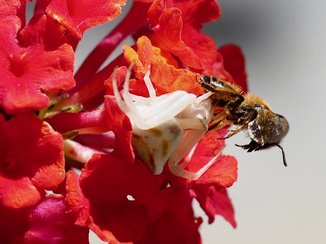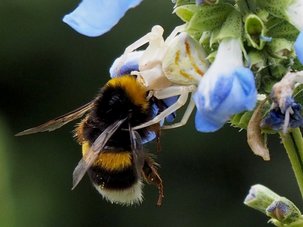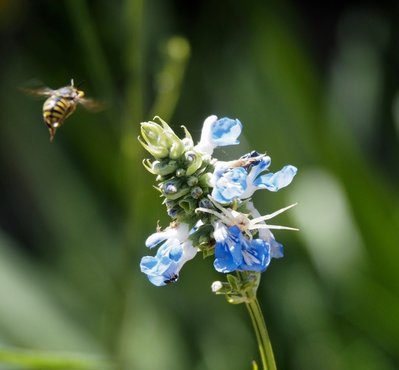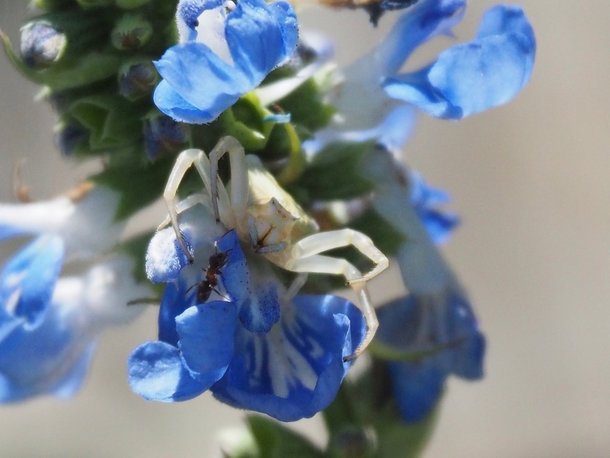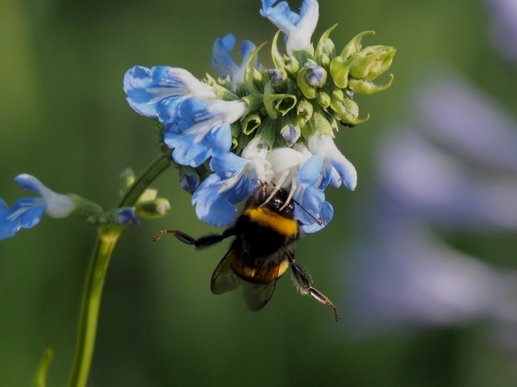Recently, I noticed two bees dangling motionless from flowers in our garden, and thought they might have got stuck. This occasionally happens to hummingbird hawkmoths, whose long tongues somehow seem to get trapped; unable to free themselves, the moths eventually die from exhaustion if not rescued. On peering more closely at the dead bees, however, I discovered they were being held in place by a small white spider.
What immediately fascinated me was that the bees didn't appear to have been caught in a web. Two days ago, as the spider seemed to have set up ambush in a salvia (bog sage), I decided to set up tripod and camera to catch it on film over a period of time.
Its colouring was such great camouflage against the blue and white flower as it lay in wait, often just underneath the bigger, bottom petal, to grab from below any bee that landed there. The petal doubled up as a handy sunshade. Whenever bees buzzed nearby, the spider would sense them (by sight and/or sound?), and stretch out each pair of extra long front legs in readiness for a welcoming embrace.
I witnessed several near misses and lucky escapes.
Crab Spider Ambush from Lesley McLaren on Vimeo.
Talking of ants, It's interesting that the spider doesn't attack them when they run over the flower - and it! Perhaps they are too small to bother with, or their exoskeleton is too hard to break through?
I examined the bumblebee once dropped, but with the naked eye couldn't see where the torso had been pierced. There did appear to be a hole in the neck, and possibly an empty cavity in the head, however. Perhaps these spiders can't manage whole bees and just feed on their brains?
They can't need much to sustain them. Male crab spiders are only about 2-4mm long, females 7-10mm. (I think the one in my garden must therefore be a female.) But their prey is often bigger than they are, and apparently they catch all sorts of pollinators - including butterflies. It's a pity they don't seem to go for less attractive insects, like mosquitoes.
The bee in the video was caught at around 7am; by midday it had already been released. I hoped the spider was sated and wouldn't catch another of my favourite garden visitors before tomorrow at least, but only an hour later, a honey bee was in her jaws. At 6.30pm she snared another bumblebee - a big one that had had a narrow escape only moments earlier. This time she attacked from above. Examination of this one after the spider had finished with it, revealed no head at all, and a small cavity in its rear end.
For part 2 of this story, go here.
